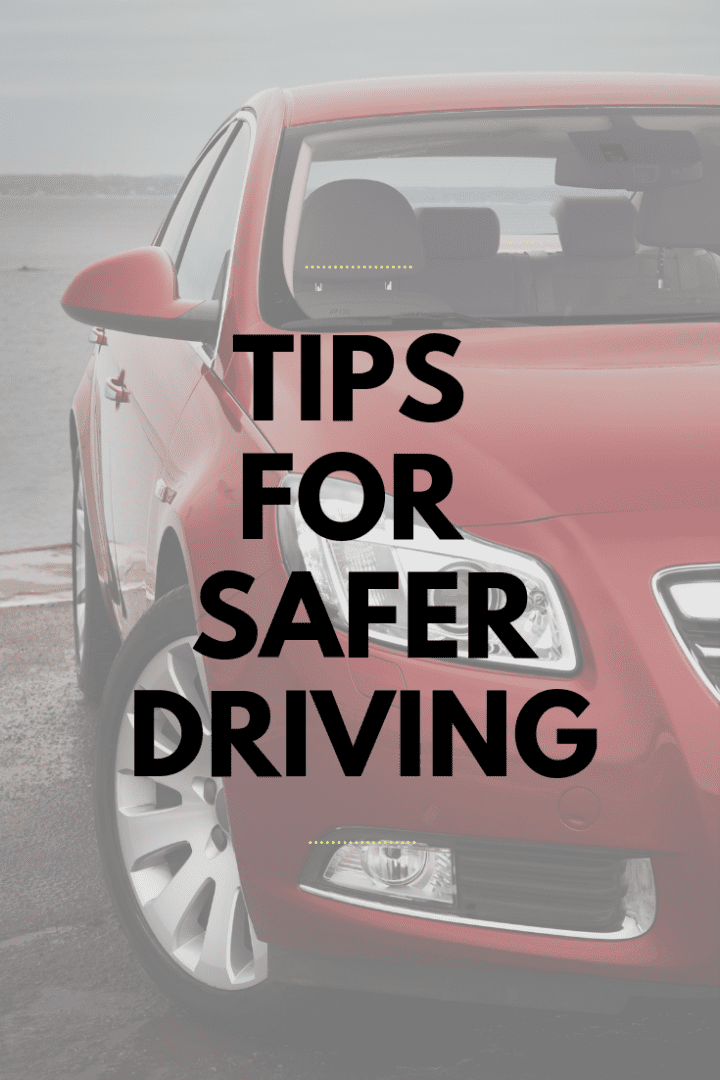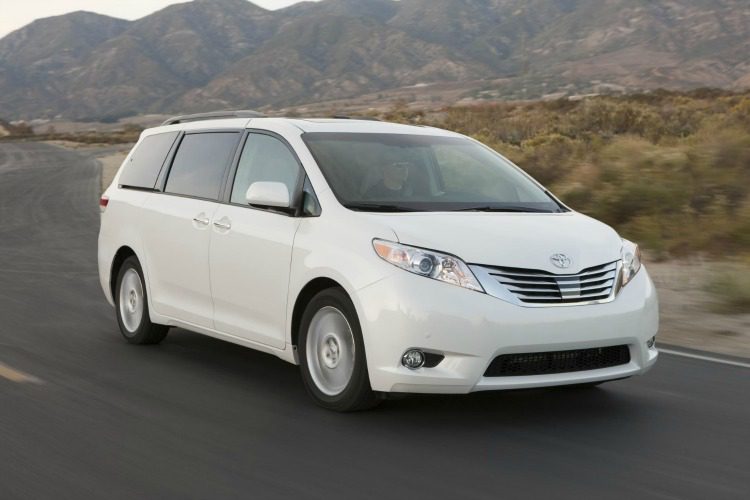Safe Winter Driving Tips
Safe Winter Driving Tips
We could all use some reminders on safe driving, couldn't we? I know that I tend to just drive on autopilot sometimes so looking at these tips is a great reminder. By remembering these facts and practicing safe driving habits, you can help make the roads safer for everyone. Let's all work together to create a culture of safe driving where everyone arrives alive. We hope that this Safe Winter Driving Tips post inspires you.

Safe Winter Driving Tips
Plan your trip
Make sure you know the route you're taking and allow plenty of time for traffic and unexpected delays.
Check your car
Regular car maintenance is essential for safety. Make sure your tires are properly inflated, your lights are working, and your windshield wipers are in good condition.
Get enough sleep
Being drowsy behind the wheel is just as dangerous as driving drunk. Aim for at least 7-8 hours of sleep before a long drive. Being tired behind the wheel is just as dangerous as driving drunk. When you're drowsy, your reaction time and judgment are impaired, increasing your risk of an accident. Getting just 4-5 hours of sleep can double your risk of being in a crash. Make sure you're well-rested before hitting the road.
Never drive under the influence of alcohol or drugs
This is one of the most important safe driving tips there is. Even a small amount of alcohol or drugs can impair your judgment and coordination. Alcohol and drugs can impair your judgment, coordination, and reaction time, making it much more likely that you will be involved in an accident.
5 Important Safety Tips to Cover With Your Teens
Wear your seatbelt all of the time.
This seems like a no-brainer but there are times when even I forget to put my seatbelt on. This is the single most effective thing you can do to protect yourself in a crash. Wearing a seat belt reduces your risk of death in a crash by 61%. It's the single most effective thing you can do to keep yourself safe in an accident.
FACT: In 2020, 90% of people who died in car crashes were not wearing seatbelts. Don't be a statistic – buckle up every time, no matter how short the trip.
Maintain a safe following distance
The general rule of thumb is to leave at least three seconds of space between you and the car in front of you. This will give you time to react if they come to a sudden stop.
Yield the right of way
Always yield the right of way to pedestrians, cyclists, and other vehicles.
Use your turn signals
Let other drivers know what you're planning to do by using your turn signals well in advance.
FACT: Using a hands-free device doesn't eliminate the dangers of distracted driving. Your brain is still trying to process two tasks at once, which can impair your reaction time and judgment.
New Truck Driver Mistakes and How to Avoid Them
Be aware of your surroundings
Pay attention to what's happening around you, not just the car in front of you. Watch out for blind spots, merging traffic, and potential hazards. Distracted driving is responsible for 23,000 deaths and over 1 million injuries in the US alone every year. That's more than all weather-related crashes combined!
Focus on the road
Avoid distractions such as your phone, eating, or talking to passengers. Keep your eyes on the road and your hands on the wheel. According to the National Highway Traffic Safety Administration (NHTSA), in 2020 alone, 3,142 people were killed in crashes involving distracted drivers. That's an average of 9 people killed every day. Taking your eyes off the road for even a few seconds can have deadly consequences.
Never text and drive.
Keep your phone in your purse or out of reach so you are never distracted or tempted to check it out. Studies have shown that talking on the phone while driving can impair your reaction time as much as having a blood alcohol content (BAC) of 0.08%. Texting while driving is like driving blind for 5 seconds at 55 mph. That's enough time to cover the length of a football field without seeing anything!
Drive defensively.
Assume that other drivers are going to make mistakes and drive accordingly. Don't get angry or frustrated if someone cuts you off. Just focus on driving safely.
Motorcycle Accidents: How Lawyers Can Help Establish Liability
FACT: Speeding is a major factor in nearly 1/3 of all traffic fatalities.
Obey the speed limit
Speeding is one of the leading causes of car accidents. Remember, the speed limit is there for a reason. NHTSA reports that speeding was a factor in 29% of all fatal crashes in 2020. Even small speed increases can make a big difference. Driving just 10 mph over the speed limit can double your risk of being in a fatal crash. Slow down in bad weather and heavy traffic. When visibility is poor or traffic is congested, it's even more important to slow down and give yourself more time to react. For every 1 mph increase in speed, the risk of a fatal crash increases by 10%. So, even going just a few miles over the limit can significantly raise your risk of being in a serious accident. It's simply not worth the risk. Even if you're a good driver, you can't control what other drivers do. Speeding increases the chances that you won't have time to react to a mistake made by another driver.
Avoid driving in bad weather
If you can, avoid driving in heavy rain, snow, or fog. If you must drive in bad weather, slow down and take extra precautions.
Take breaks
If you're feeling tired, pull over and take a break. It's better to be safe than sorry.
Be courteous to other drivers
Share the road and be patient. Remember, everyone is trying to get to the same place.
For driving in bad weather
- Slow down. It takes longer to stop on wet or icy roads.
- Increase your following distance. Give yourself even more space between your car and the car ahead of you.
- Turn on your headlights. Even during the day, headlights can help you see and be seen.
- Avoid sudden stops and turns. Take your time and make smooth maneuvers.
- If you can, avoid driving altogether. If the weather is really bad, it's best to stay home until the roads are clear.
Driving Safety Tips
Additional tips
- Take a defensive driving course. This can teach you valuable skills for avoiding accidents.
- Get regular car maintenance. This can help prevent breakdowns and other problems that could lead to accidents.
- Be a good role model for other drivers. Set a good example by following the rules of the road and driving safely.
- Use your car's safety features: Make sure you're familiar with all of your car's safety features, such as airbags and anti-lock brakes.
- If you start to feel drowsy while driving, pull over and take a nap: Don't risk your life and the lives of others by trying to power through.
- Headlights are not just for nighttime: Use them in bad weather or low-visibility conditions to make yourself seen.
- The safest place for a child is in the back seat, in a properly installed car seat: Keep your little ones buckled up and protected.
- If you've been drinking, call a taxi, rideshare, or have a designated driver: Don't take the chance of putting yourself and others at risk.
- There are also many prescription and over-the-counter medications that can impair driving: Be sure to check the labels of any medication you're taking before you get behind the wheel.
Helpful resources
By following these tips, you can help to keep yourself and others safe on the road. Remember, safe driving is a shared responsibility. Let's all work together to make our roads safer for everyone. We hope that you found these Safe Winter Driving Tips valuable. Good luck!
5 Summer Safety Tips for Kids






Such a perfect post and so great! I love learning about safety especially with a growing family
Driving safe is of utmost importance today. Thanks for sharing these useful tips.
Glad to learn about Uniden R7 Radar Detector here as I have no idea there is such a thing. It is especially good for the new license holder to help them have a safe driving speed and avoid speeding tickets.
I sadly don’t have my car anymore, but I definitely followed all these tips. The device looks so helpful too!
What an important post with great tips!
I do not drive but why am I too afraid, that perhaps it is enough to follow these tips to remove it?
This is a great guideline to follow! Everyone needs to read it!
These are some great tips. The Uniden R7 Radar Detector sounds like a handy device to have.
Seriously this post is so necessary! Especially for people driving here in LA!
Thanks for sharing this tips. All this tips should be at the back of my mind always when driving.
Love this post from you esp I love to travel, gonna check out this & hope I can plan a safe road travel around all states in Malaysia
Thanks so much for this lovely informative sharing 😀
cheers, siennylovesdrawing
These are some basic tips but we often just ignore some of them. I’ve seen people driving without seat belts, and that scares me. It’s important to know how to safely drive a car.
I love these articles, always gives me little bit of sense what I need to do and be prepared for Thanks!
These radars are pretty convenient. My friend’s mom has it and she keeps tabs on her 18-year-old when he drives.
I’ve been looking into one of these for a friend. I didn’t know they had all these features.
It drives me crazy when I see people texting and driving. And sadly, I see it all the time.
I need this because sometimes I think I’m going one speed and then boom a cop is pulling me over. I’m always like it doesn’t feel like I was going 80 I just go with the flow of traffic
I always like to say, “I trust my driving. It’s the other drivers I don’t trust!” The Uniden radar detector will also come in handy
I’d really like to try this radar detector out! Who wants a speeding ticket, right? Your tips are right in line with what I feel to safely navigate with my little ones.
I haven’t seen these for a while. I try to stay right around the speed limit though.
I wish everyone knew these tips before getting on the road. I also like that radar detectors can now detect if you are going over the speed limit because sometimes the MPH changes and you don’t even know it.
This is a must have device for a safer driving! I need it for my car!
I never thought about using a radar detector to help me stay under the speed limit
The driving safety tips are a huge reminder to everyone behind the wheel. I was eager to read through them and make a mental mark of them one time more. Thank you!
These are some great tips for driving. I have to admit sometimes I feel like I am not made for the road but most of the time I really enjoy driving to be honest.
That sounds really helpful! I’ll have to check it out!
These are excellent tips. I would love to have that radar detector. I think it’s great that I can set a speed alert so I don’t have to keep looking down at the speedometer.
First time hearing about the UNIDEN R7 RADAR DETECTOR. I love the idea of getting voice notifications. I have already received 2-speed tickets so this may be helpful to buy 🙈
These are really helpful tips! It is important to stay focused all the time.
Thanks for bringing this up as I am actually buying my first car and I need this! Haha. Pray for me!
Great tips for all driving especially the younger lot. The best pleasures of a drive can only be enjoyed by driving safe.
Always better to be safe than sorry! I think these are the perfect tips for safe driving, thanks!
I would love to know more about the radar detector. Can’t wait to read your next post about it.
Safe drivers are far too uncommon. I would really like to see people take driving more seriously!
I have got to share this. So many of my friends can be crazy behind the wheel!
These are great safe driving tips. I have no idea Uniden R7 Radar Detector even exist. It is such an amazing system that allows us to keep a safe speed on the road.
Driving is one of those things that people don’t take serious enough. I’ve lost people due to reckless driving so I appreciate you raising awareness!
Great tips. Driving safe is something that all of us need to work on!
Great tips. A lot of us automatically associated texting with distracted driving. I actually try my hardest to go places alone, because my kids are a huge distraction. Especially my toddler. lol.
i so agree these days people are more into phones and calls. these are some really handy tips!
These are great tips for driving! It’s always safety first no matter what. I’ll share this to my friends.
I got into a really bad accident years ago and now these tips are more important than ever. I definitely tell people to keep their seatbelts on a selfbelt saved my life!
Thank you on a detailed impressive guide! 🙂Saved your post for the future.
Pingback: Tips To Learning To Drive In A Pandemic
Pingback: 3 Tips for Moms to Function When Recovering From an Injury
Pingback: A Look at Oregon's Right of Way Law - Divine Lifestyle
Pingback: 2019 Mercedes Benz AMG E53 Cabriolet Convertible Car